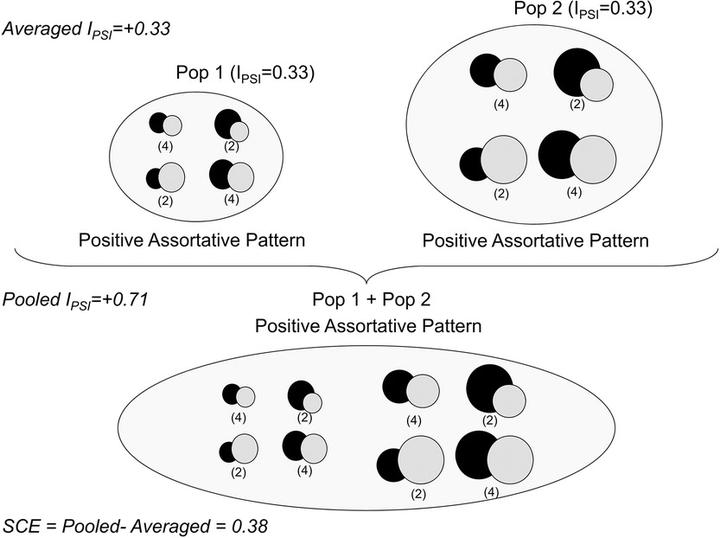The scale-of-choice effect and how estimates of assortative mating in the wild can be biased due to heterogeneous samples

Abstract
The mode in which sexual organisms choose mates is a key evolutionary process, as it can have a profound impact on fitness and speciation. One way to study mate choice in the wild is by measuring trait correlation between mates. Positive assortative mating is inferred when individuals of a mating pair display traits that are more similar than those expected under random mating while negative assortative mating is the opposite. A recent review of 1134 trait correlations found that positive estimates of assortative mating were more frequent and larger in magnitude than negative estimates. Here, we describe the scale-of-choice effect (SCE), which occurs when mate choice exists at a smaller scale than that of the investigator’s sampling, while simultaneously the trait is heterogeneously distributed at the true scale-of-choice. We demonstrate the SCE by Monte Carlo simulations and estimate it in two organisms showing positive (Littorina saxatilis) and negative (L. fabalis) assortative mating. Our results show that both positive and negative estimates are biased by the SCE by different magnitudes, typically toward positive values. Therefore, the low frequency of negative assortative mating observed in the literature may be due to the SCE’s impact on correlation estimates, which demands new experimental evaluation.